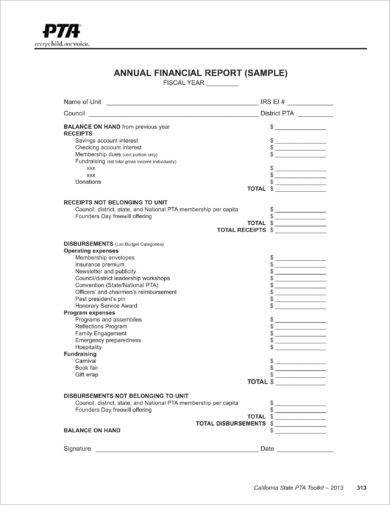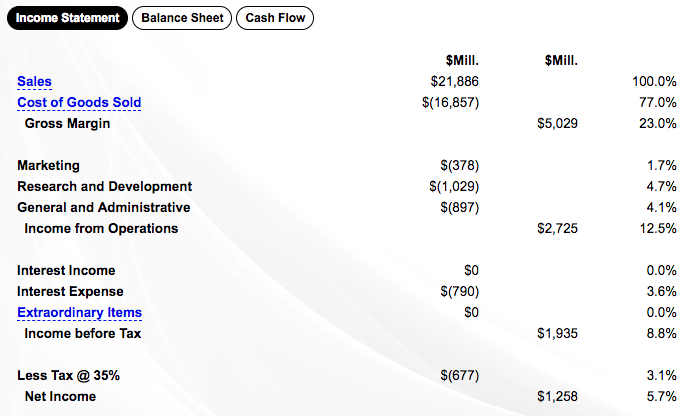How to Write an Annual Report: 4 Tips
read this blog article green bay paper
Any uncommon or unanticipated differences for green bay paper a specific summary line item should be examined. Provide explanations for green bay paper your unit’s substantial differences in the Remarks section of each tab, and guarantee restorative action is recognized and handled a prompt basis, if relevant. Be mindful of locations in which activity significantly changes throughout the year, and keep in mind these variations when analyzing the information.
Drill down to acquire more detailed account data for any line product amounts with exceptional variances. (Note: Since UC financial statements are categorized mainly based upon the account categories, the focus of this evaluation is on that viewpoint.) For some differences, it may be essential to run the report to examine and corroborate the real information deals to determine the explanations.
The following guidelines offer some additional instruction of what to search for in the evaluation of information transactions to explain variations: Unusual: One-time transactions, transactions associated with brand-new economic events or contractual contracts, or transactions connected to agreements with substantial rate or volume modifications Inaccurate: Transactions that were improperly coded, with wrong amounts, or tape-recorded in the wrong duration (timing distinction) Void: Transactions that did not associate with financial events that occurred or were not executed according to policies and procedures, consisting of approval Payment Expenditure The 2nd essential monetary report a minecraf issue monitoring activity is the evaluation of the Cal Responses General Ledger Settlement by Accounting Period Report.
For that reason, wages and salaries costs necessitate more in-depth management review. They need to be examined to guarantee they are associated only with existing employees which the amounts are precise for staff members’ services in the period. The Cal Answers General Ledger Payment by Accounting Period Report provides a list of employees and payroll amounts by account by month.
Secret functions of Berkeley Box are as follows: Box file folders are established, monitored and maintained by the Controller’s Office. Each Division Finance Leader (DFL) is sent out an email welcoming him or green bay paper her to click the “Log in” button thereby developing a new account of which gain access to is strictly permitted only to the assigned/invited DFL – Division’s Box file folder.
How to read financial statements
These emails contain quick instructions discussing both the purpose of and why it is only the DFL is allowed access to these files. Box may be accessed at and utilizes an individual’s network username and password to login. Following the completion of the General Ledger and Settlement report evaluation as defined by the instructions, conserve the file and Lam Research upload it to your particular Department’s file folder.
At the end of the default file name insert: Division Node Specify which is appropriate – Q1, Q2, Q3 or Q4 Example GL Summary – Monthly Comparative Actuals COCHM Q2 Suggestions Gain Access To Box through Google Chrome Viewer Uploader Access for DFLs readily available as referral guide.
If you’re looking for green bay paper a good introduction to monetary statements, continued reading. We’ll discuss the fundamentals of each financial statement, and how to check out (and usage) themso your business runs like a well-oiled maker. What are financial report dropbox paper declarations? Financial statements are reports that sum up essential financial accounting details about your business.
We’ll take a look at what each of these 3 basic financial statements do, and examine how they interact to provide you a complete photo of your company’s monetary health. The balance sheet A balance sheet is a photo of your company finances as it currently stands. It informs you about the assets you own, and liabilities (i.
 How To Prepare An Income Statement: green bay paper A Simple 10-Step Business Guide
How To Prepare An Income Statement: green bay paper A Simple 10-Step Business GuideHow often your accountant prepares a balance sheet for you will depend upon your company. Some businesses get day-to-day or month-to-month monetary declarations, some prepare financial statements quarterly, and some only get a balance sheet when a year. For example, banks move a great deal of money, so they prepare a balance sheet every day.
Preparing Financial Business Statements
 financial report dropbox paper Statement Analysis Project
financial report dropbox paper Statement Analysis ProjectBalance sheets are separated into 3 basic categories: possessions, liabilities, and equity. Here’s an example of what a balance sheet looks like if you’re a Bench customer. Properties Assets are anything important that your business owns. On the Bench balance sheet shown above, possessions consist of: Money in a checking account and Money in transit (being moved from another account) But total properties can likewise consist of things like devices, furnishings, https://Www.Arera.Org.uk/community/profile/arleenthomsen79/ land, structures, keeps in mind receivable, and even intangible home such as patents and goodwill.
On our balance sheet example above, the only liability is a bank loan. But total liabilities can likewise include credit card financial obligation, home mortgages, and accumulated costs such as energies, taxes, or salaries owed to workers. Equity Equity is the staying worth of the company after deducting liabilities from assets. This might be retained revenuemoney the business has made to dateas in the example above.
58. This indicates someone who owns part of the business has actually withdrawn some cash from shareholder’s equity. This is a method some entrepreneur pick to pay themselves. Equity can likewise include private or public stock, otherwise a preliminary financial investment from your company’s creators. For instance, expect you began an online shop, and put $1,000 in its checking account as operating capital (to pay web hosting costs and other expenditures).
It is necessary to keep in mind that equity is just the “book value” of your business. It’s not your service’ market price if you wanted to sell the business. When offering a business, purchasers generally pay more than the book value of the organization based on things like the company’s yearly incomes, the market worth of tangible and intangible residential or commercial property it owns, and more.




